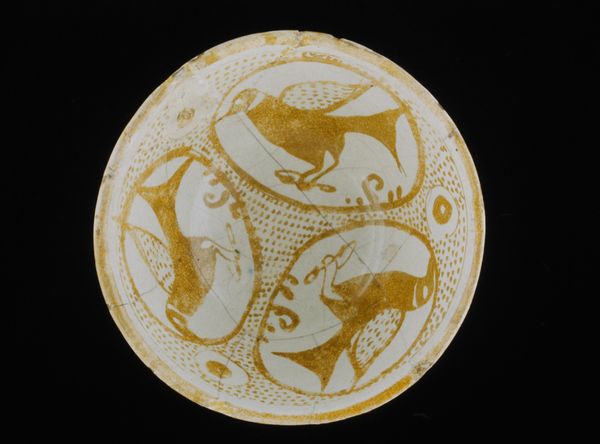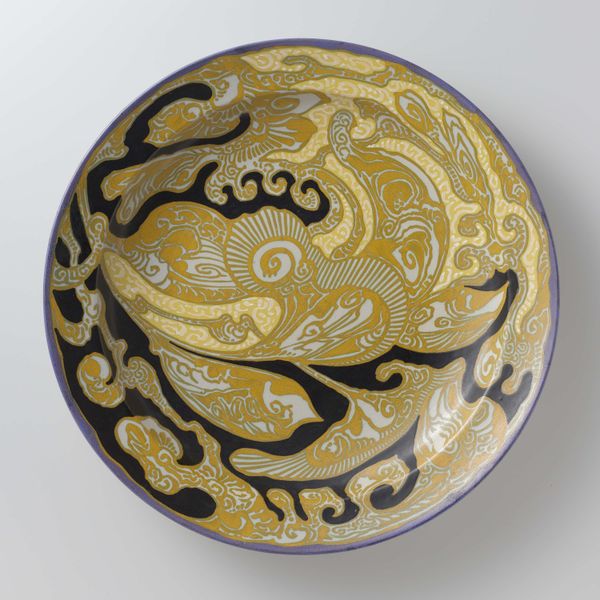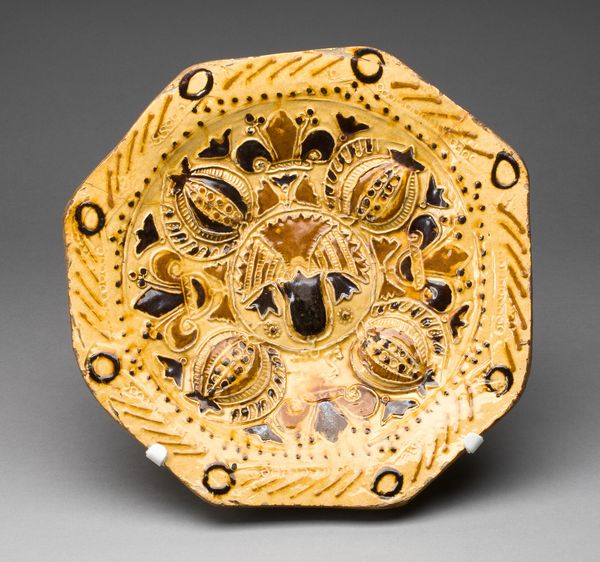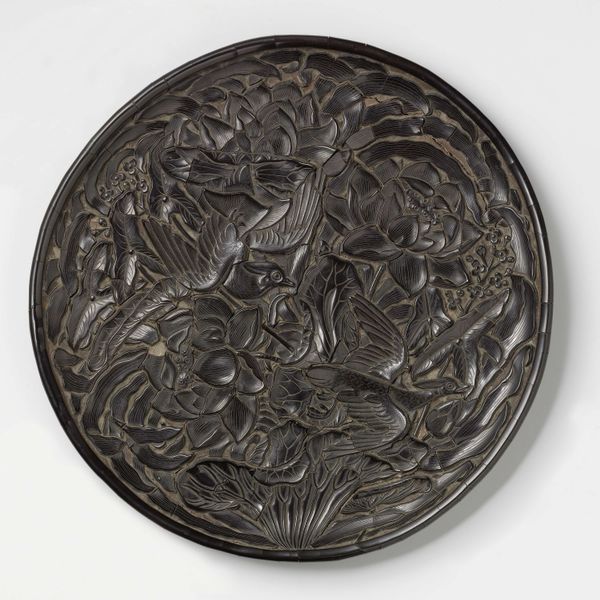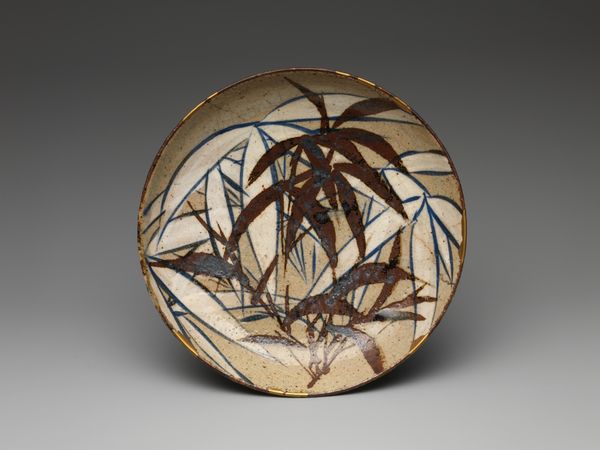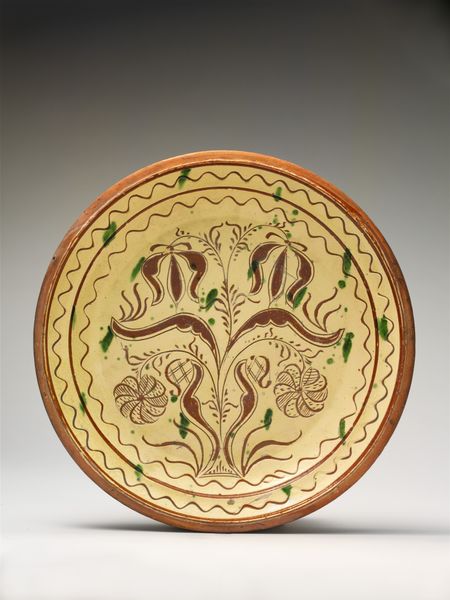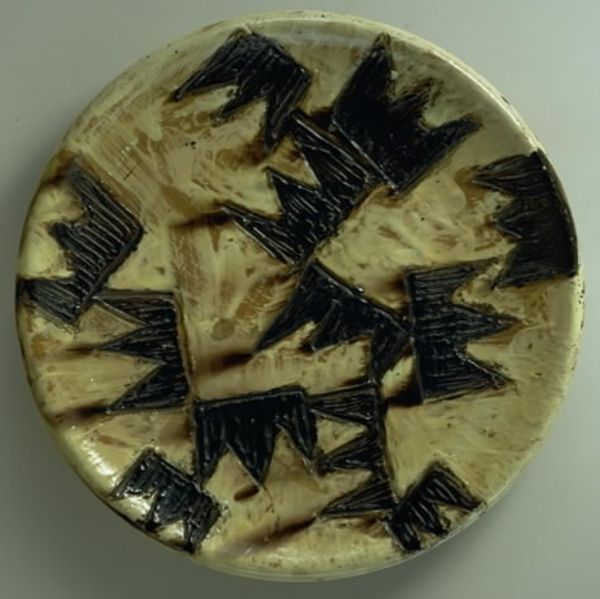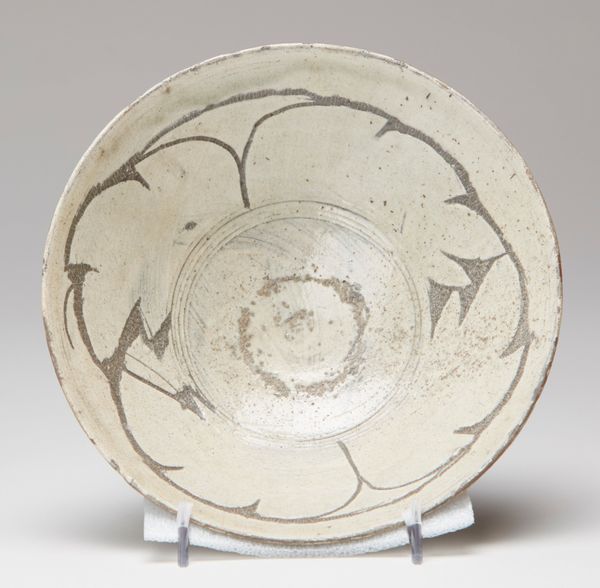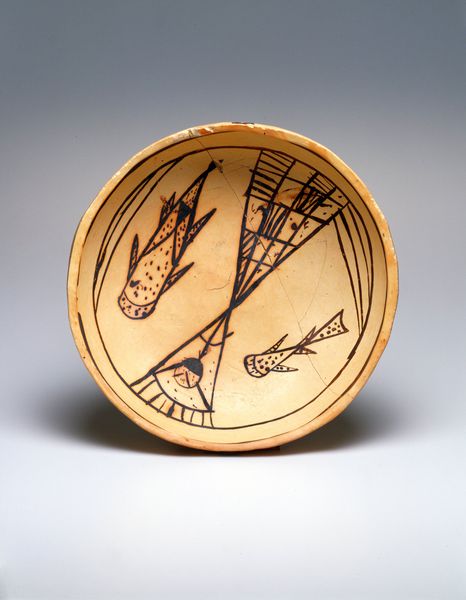
silk, textile, cotton
#
organic
#
decorative element
#
silk
#
arts-&-crafts-movement
#
textile
#
figuration
#
line
#
cotton
#
decorative-art
Copyright: Public Domain
Curator: Here we have "Circular Framed Embroidery," crafted around 1880 and currently held here at the Minneapolis Institute of Art. This piece features silk and cotton textiles and exemplifies the Arts and Crafts movement. Editor: My first impression is one of fluidity and grace, despite the static nature of embroidery. The circular frame seems to contain swirling currents and organic forms—almost like an underwater scene rendered in muted tones. Curator: Indeed. Considering its era, we must examine the Arts and Crafts movement’s response to industrialization. The artist, Selwyn Image, consciously rejected mass production, prioritizing handcrafted techniques and organic motifs celebrating nature and pre-industrial aesthetics, all imbued with social critique and advocacy for artistic integrity. Editor: Looking closer, I'm fascinated by the layering and the controlled chaos. The artist’s choice to depict fish and stylized wave patterns invites an analysis of how line quality and form interplay to create visual depth and movement on a two-dimensional surface. The subtle color palette contributes to a sense of understated elegance. Curator: Right, and consider the cultural context! During the late 19th century, there was an emphasis on decorative arts in the domestic sphere, and women were often associated with embroidery. This work can then be interpreted as engaging with these gendered notions, either celebrating or challenging them through the choice of imagery and technique. Was it an act of liberation or reinforcement? Editor: Perhaps both? The act of creation is an expression regardless of the circumstance. Focusing on craft, the stitch work itself warrants appreciation. The direction and density of the stitches dictate texture and luminosity—essentially painting with thread to form a complete cohesive whole within that bold, circular constraint. Curator: Agreed. The fish, rendered so elegantly, may represent fertility or abundance, which also holds deeper meaning when understood through broader societal concerns and their role in reflecting social aspirations of the period. The piece speaks to a society in flux, where old values meet new aspirations and find their place through craft. Editor: It is remarkable to think that this circular work serves as both a static artwork and a preserved moment from such a transformative time.
Comments
No comments
Be the first to comment and join the conversation on the ultimate creative platform.
